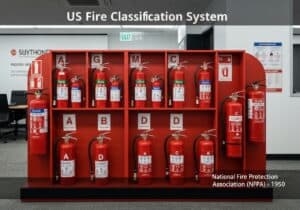Un enfoque holístico para gestionar el proceso de fabricación de principio a fin.
- Metodologías: Clientes y marketing, Ingeniería, Ergonomía, Diseño de producto
Gestión de operaciones de fabricación (MOM)

Gestión de operaciones de fabricación (MOM)
- Mejora continua, Automatización industrial, Manufactura esbelta, Fabricación, Mejora de procesos, Optimización de procesos, Eficacia de la producción, Seguro de calidad, Gestión de calidad
Objetivo:
Cómo se utiliza:
- A broad category of software and systems that manage all aspects of manufacturing operations, from production and inventory to quality and maintenance. It aims to optimize efficiency across the entire manufacturing process.
Ventajas
- Provides a holistic view of manufacturing operations; Can lead to significant improvements in efficiency and quality.
Contras
- Can be complex and expensive to implement; Requires a high degree of integration between different systems.
Categorías:
- Lean Sigma, Fabricación, Gestión de proyectos
Ideal para:
- Optimizing the entire manufacturing process in a large and complex organization.
Manufacturing Operations Management (MOM) encompasses a range of applications designed to oversee and improve various facets of manufacturing processes, making it particularly valuable in industries such as automotive, aerospace, consumer goods, pharmaceuticals, and electronics. In the project phase of implementation, it is often initiated by operations managers and involves collaboration among cross-functional teams, including engineering, quality assurance, supply chain management, and IT specialists, ensuring comprehensive integration of manufacturing activities. Typical systems within MOM include Manufacturing Execution Systems (MES), which monitor real-time production data; Quality Management Systems (QMS), that maintain standards throughout production; and Inventory Management Systems, which optimize stock levels and reduce waste. The use of MOM allows organizations to track key performance indicators (KPIs) across processes, facilitating data-driven decisions that enhance production throughput while minimizing downtime. Continuous improvement methodologies such as Lean Manufacturing and Seis Sigma are often aligned with MOM systems, delivered through software solutions that automate data collection and analysis, thereby increasing both efficiency and output quality. Companies employing these methodologies often report significant cost savings, reduced cycle times, and improved employee engagement, driven by a culture of data transparency and operational excellence.
Pasos clave de esta metodología
- Identify key manufacturing processes and workflows needing optimization.
- Implement real-time monitoring and data collection systems across operations.
- Analyze performance data to identify bottlenecks and inefficiencies.
- Establish metrics to measure efficiency, quality, and other operational goals.
- Utilize advanced analytics and modeling to predict and mitigate potential issues.
- Integrate automation and technology solutions where applicable.
- Adopt lean manufacturing principles to eliminate waste and streamline processes.
- Enhance supply chain visibility for better inventory management.
- Develop and implement strategies for continuous improvement.
- Conduct regular training and development for staff on new systems and processes.
- Evaluate maintenance processes and implement predictive maintenance practices.
Consejos profesionales
- Implement real-time data analytics to monitor production metrics and equipment performance, enabling proactive decision-making and minimizing downtime.
- Utilize advanced forecasting tools in inventory management to adjust production schedules based on demand variability and optimize stock levels.
- Integrate cross-functional collaboration platforms to enhance communication between engineering, operations, and supply chain teams, improving alignment and problem-solving capabilities.
Leer y comparar varias metodologías, recomendamos el
> Amplio repositorio de metodologías <
junto con otras más de 400 metodologías.
Sus comentarios sobre esta metodología o información adicional son bienvenidos en la dirección sección de comentarios ↓ , así como cualquier idea o enlace relacionado con la ingeniería.
Contexto histórico
1950
1950
1956
1960
1960
1960
1960
1950
1950
1950
1958
1960
1960
1960
1960
(si se desconoce la fecha o no es relevante, por ejemplo "mecánica de fluidos", se ofrece una estimación redondeada de su notable aparición)















Publicaciones relacionadas
Programa Maestro de Producción (MPS)
Personalización masiva
Embudo de marketing
Auditoría de marketing
Índice MAPO (Movimiento y Asistencia de Pacientes Hospitalizados)
Planificación de recursos de fabricación (MRP II)